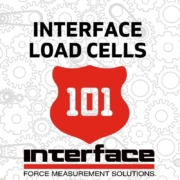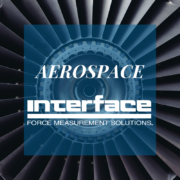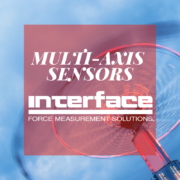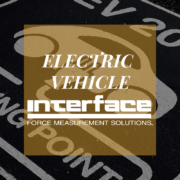Interface Solutions for Research and Development
 Among the many roles of force measurement in engineering and manufacturing, the role of force sensing in research and development may be the most exciting and important. Load cells and other types of force sensors qualify and collect data on exploratory projects across a wide variety of industries. These tests determine the viability of a potential project and eventually new innovations.
Among the many roles of force measurement in engineering and manufacturing, the role of force sensing in research and development may be the most exciting and important. Load cells and other types of force sensors qualify and collect data on exploratory projects across a wide variety of industries. These tests determine the viability of a potential project and eventually new innovations.
Research and development are core to most businesses to stay competitive. R&D is essential in creating new products and anticipating customer demands. Whether it is assessing the viability of a new IoT home technology for consumers or designing a component used in a new surgical medical device, research is core to the technical and technological development of most any product.
In an R&D environment, force testing helps to compare product materials, determine the strength materials and components, and evaluate environmental, ergonomic, and other features. Additionally, force testing is common across industries as a quality control measure to accurately check that a given group of products meet targeted design specifications, per performance, safety, and regulatory requirements.
Interface often works with engineers whose role it is perform research and development within their organization. R&D engineers use research theories, principles, and models to perform a variety of experiments and activities. Not only do R&D engineers create new products, but they often are responsible for the redesign of existing products.
Our goal at Interface is to help R&D engineers identify the best sensor-related products they can use to work through the problems they are seeking to solve. The products we provide validate findings through highly accurate sensor test and measurement data. There are some R&D applications that need just one or two load cells and basic instrumentation to conduct the project testing. Other times Interface is asked to create an application-specific engineered to order part or design a custom measurement solution to achieve the desired test and measurement outcomes. The later is often the case if a sensor is an actual part of the product design. Interface has helped R&D engineers assess all kinds of prototypes and early designs using our precision force measurement devices.
Force measurement is used throughout the product research and development lifecycle, from ideation and prototyping, to robust testing and eventual commercialization phases.
- IDEATION: In the ideation phase, we provide force measurement solutions for testing materials for compatibility with the idealized product’s use cases.
- PROTOTYPING: In prototyping, force sensors help engineers select a minimum viable product (MVP) design. Sensors are used in the lab environment to validate a product or component, or as an actual embedded sensors utilized for real-time feedback and performance monitoring.
- TESTING: When a product moves into the testing phase, it ready for a more thorough batch of tests including cycle and fatigue testing. Our load cells, torque transducers and instrumentation are commonly used in these environments. Every product will require a sensor model that fits by specifications and capacity.
- COMMERCIALIZATION: Finally, when a product is ready for commercialization, we provide products used to run a variety of tests to ensure the product is constructed in a way that is safe for the user and meets certain force related specifications for intended use.
To give you an example of how an R&D engineer utilizes force sensors, we have included a few application examples below.
R&D Testing for Bicycle Manufacturer
A bike manufacturing company R&D engineer created a new handlebar design. They need to test the handlebar concept for their bikes during the R&D phase to ensure they will perform for a rugged trail ride experience, while ensuring safety of the recreational equipment. The R&D team took the concept and conducted fatigue tests on their handlebars to observe its structure and performance durability before mass production. Interface suggested using Interface Mini™ product SSMF Fatigue Rated S-Type Load Cells. Two of these s-type load cells are attached on either end of the bike’s handlebar stem, where it will measure the forces applied as the handlebar undergoes its fatigue test. Results can be measured, logged, and graphed with the SI-USB Universal Serial Bus Dual Channel PC Interface Module.
Research Rig Used for Testing Prosthetic Designs
Prosthetic limbs must undergo rigorous R&D testing prior to manufacturing. These critical apparatuses are tested for extreme loading that can occur during falls, accidents, and sports movements. Fatigue testing of prosthetic components determines the expected lifespan of the components under normal usage. R&D engineers use testing data to determine whether prosthetic materials and designs will withstand the rigors of daily use and occasional high load situations. For the R&D project, various configurations of compression and tension test machines can be used depending on the type of prosthetic device being tested. Often the same machine can be used for static and fatigue testing. For this application, an SSMF Fatigue Rated S-Type Load Cell is mounted between a hydraulic actuator and the device being evaluated. During static testing, loads are applied to the specimen using the load cell signal as force feedback control of the test machine. During a fatigue test, the actuator repeatedly applies and removes the force to simulate activity such as walking. Tilt tables may be used to apply forces at various angles to simulate the heel-to-toe movement of walking or running. The 9890 Strain Gage, Load Cell, mV/V Indicator with Logging Software was used to store the research data.
Electric Vehicle Structural Battery Testing for Prototype
Battery technology is critical to the evolution of electric vehicles, so there are a variety of tests performed on new innovations in EV battery technology. As electric vehicles push advancements in efficiency gains, structural battery packaging is at the forefront for optimization. This drives the need to validate structural battery pack design, both in terms of life expectancy against design targets as well as crash test compliance and survivability. Interface’s solution for this challenge included 1100 Ultra-Precision LowProfile Load Cells in-line with hydraulic or electromechanical actuators in the customer’s test stand. Also utilized were 6-Axis Load Cells to capture reactive forces transmitting through pack structure. Multi-axis measurement brings greater system level insight and improved product success. The tests performed using Interface’s force measurement products were able to validate the battery packs strong structural design.
Proving Theoretical Cutting Forces Of Rotary Ultrasonic Machining
Rotary ultrasonic machining is a hybrid process that combines diamond grinding with ultrasonic machining to provide fast, high-quality drilling of many ceramic and glass applications. This new method has been theoretically proven using computer models. Rotary ultrasonic machining generates forces of an exceedingly small magnitude. To prove this theory, any load cell used for measurement must be sensitive, while at the same time retaining high structural stiffness within a compact, low-profile envelope. Interface’s 3A120 3-Axis Load Cell was installed in the rotary ultrasonic machine to measure the forces being applied to a sample part. With clear signals and minimal crosstalk, the applied forces are recorded and stored using an the BSC4D Multi-Channel PC Interface Module. The 3-Axis load cell provided excellent data helping uncover the relationship between machine cutting parameters and the forces applied on the component. Using this knowledge, the machining process was reliably optimized for new materials and operations.
The role of Interface as it pertains to R&D is constantly growing as engineers create new innovations to solve a myriad of challenges throughout the world. We provide the most accurate and reliable force measurement systems to help advance technology across industries.
ADDITIONAL RESOURCE
Interface OEM Solutions Process
Interface Solutions for Machine Builders
Interface Solutions for Consumer Product Goods
CPG Bike Frame Fatigue Testing
CPG Treadmill Force Measurement
Interface Sensors Used for Development and Testing of Surgical Robotics








